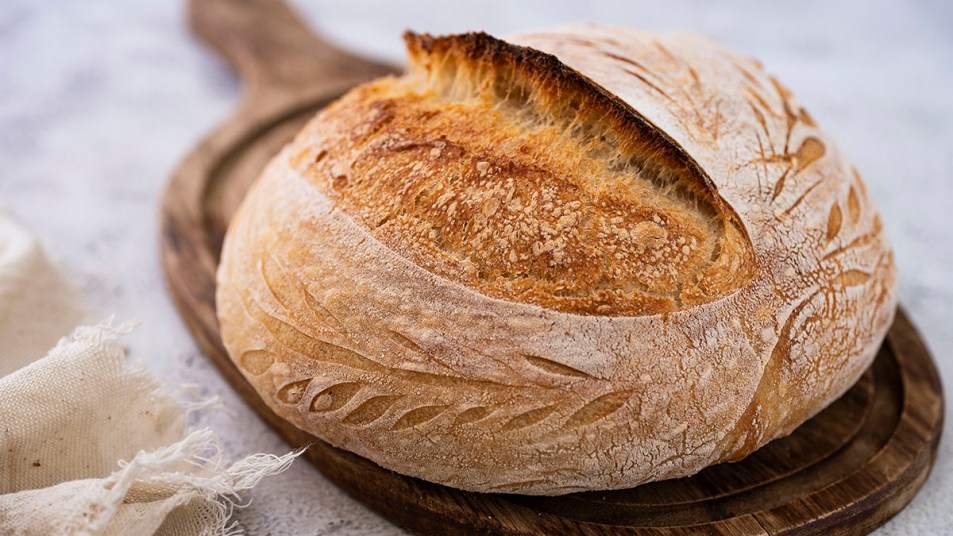Eating These Types of Breads Might Be the Key to Living Longer

Much like Oprah Winfrey, I love bread. I mean, I love it. Anytime I go to a restaurant, I’m the person who’s too full to finish my meal because I kept digging into that bread basket. But I’ve often been told to lessen my consumption, since bread — and the gluten and carbs it’s loaded with — has a reputation for being bad for our health. Well, people living in the areas of the world where residents live the longest beg to differ! Turns out, they eat four kinds of bread that could help keep you healthy and extend longevity, to boot.
The term “Blue Zones” refers to five specific places: Okinawa, Japan; Icaria, Greece; Sardinia, Italy; Loma Linda, California; and Nicoya Peninsula, Costa Rica. These are the areas where, on average, people live the longest, with residents often celebrating their 100th birthdays — and beyond. This curious fact has led researchers to study the people who live here, to see what the rest of us might learn that could be beneficial to our health. Diet has emerged as a huge reason for their longevity, and we’ve broken it down in previous stories. But this time, we’re just going to focus on one of my favorite subjects: Bread.
What kind of bread is healthy?
The key to choosing the healthiest types of bread to eat is looking at the way it’s processed and served. Unfortunately, most of the bread sold in America, like white bread, is highly refined, which takes away some of the natural beneficial qualities of the breads that people in the Blue Zones eat.
“In the U.S., bread tends to be less fresh and more processed than in other countries,” Kelly Jones, MS, RD, CSSD, LDN, told Well + Good. “And in general, Americans have less variety in their diets when it comes to starches, meaning fewer whole grains and more refined white flour.”
In the Blue Zones, residents tend to eat bread that they baked from scratch, leaving in all the good stuff like fiber that makes it healthy. In general, the more whole grain the bread is, the better. “Research consistently shows that diets rich in whole grains are associated with healthier aging and longevity,” said Jones.
4 Types of Breads for Longevity
1. Sourdough.
Sourdough is one of the easiest kinds of breads to make. All you need is a sourdough starter plus water and flour. That simple ingredients list is what keeps it so healthy. “Thanks to the process of fermentation required for making starter, sourdough bread tends to have more prebiotic properties and also may enhance nutrient absorption compared to other forms of bread, especially those made without whole grains,” said Jones.
2. Whole Grain Bread
Remember: the more whole grains, the healthier bread is! That’s because all the good stuff like fiber, nutrients, antioxidants, and amino acids stay intact, giving us more health benefits. People living in the Blue Zones often make bread from grains like wheat, rye, and barley, all with their own sets of benefits.
3. Pita bread.
If you’re a fan of Greek food, then you know how delicious it is to have a side of pita bread with your meal. And it’s good for you, too! Residents of Icaria, Greece serve pita with nutritious foods like lentils, all kinds of vegetables, olive oil, and simply prepared meats. Since pita is similar to whole wheat bread, it makes a great compliment to healthy meals.
4. Cornbread.
You might be shocked to find this southern staple on the list, but cornbread is actually packed with nutritious benefits. The cornbread made in Loma Linda leans on whole grains and fiber to bring out those benefits, making it chock full of protein, fiber, and more health-boosting minerals.
The most important factor in making bread healthy is what you pair it with. So if you love to have some crusty carb-filled goodness with your meals, make sure you’re eating it with other foods in the Blue Zone diet, such as salmon, olive oil, nuts, and veggies. It could seriously improve your longevity!












